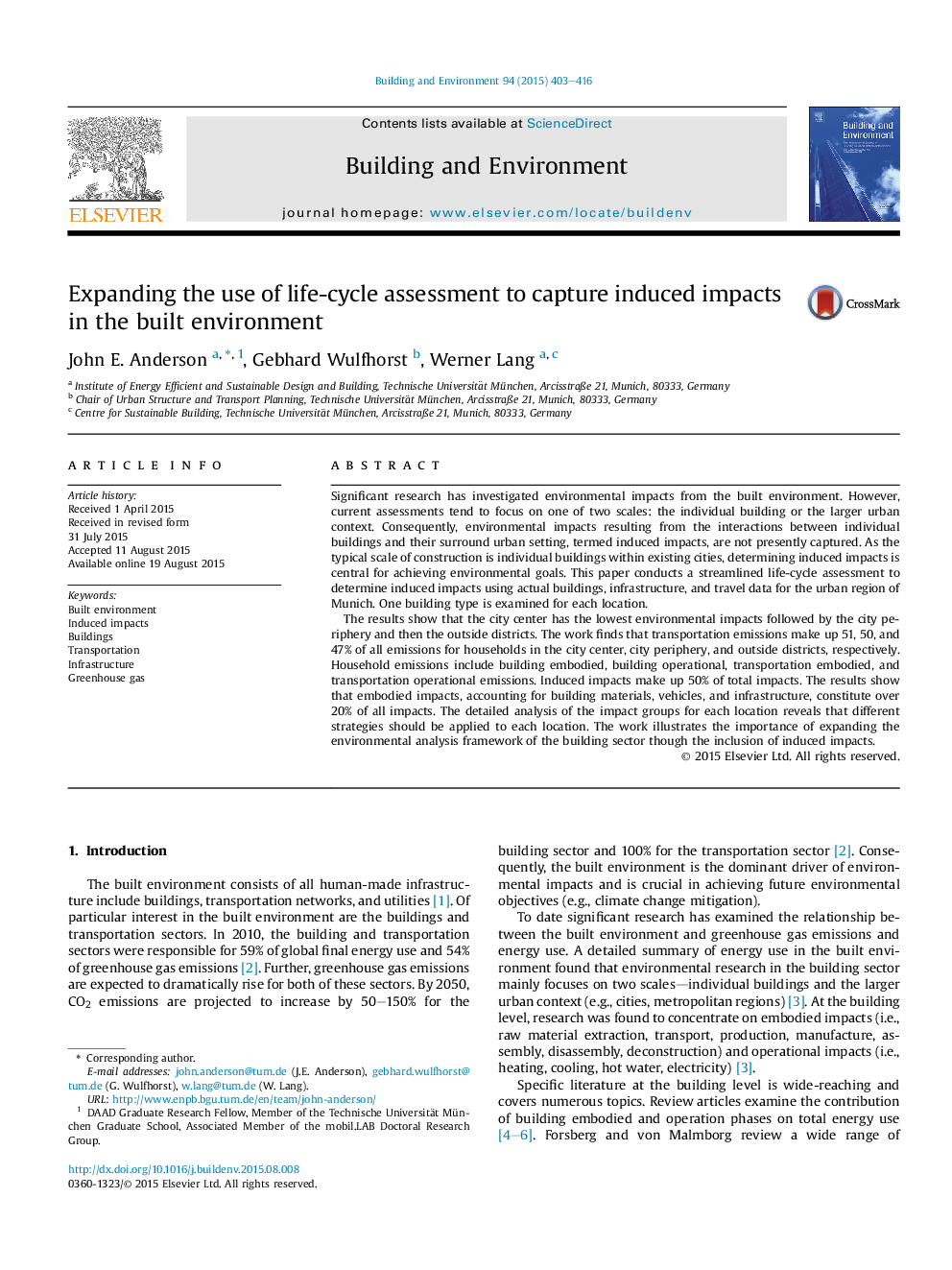| Article ID | Journal | Published Year | Pages | File Type |
|---|---|---|---|---|
| 247823 | Building and Environment | 2015 | 14 Pages |
•Introduces a new impact group, induced impacts, for multi-scale analysis.•Conducts detailed LCA of buildings, transportation, and infrastructure.•Shows that induced impacts make up 50% of greenhouse gas emissions.•City center residents have 48% lower greenhouse gas emissions than rural residents.•Presents future scenarios of building renovations and vehicle emission reductions.
Significant research has investigated environmental impacts from the built environment. However, current assessments tend to focus on one of two scales: the individual building or the larger urban context. Consequently, environmental impacts resulting from the interactions between individual buildings and their surround urban setting, termed induced impacts, are not presently captured. As the typical scale of construction is individual buildings within existing cities, determining induced impacts is central for achieving environmental goals. This paper conducts a streamlined life-cycle assessment to determine induced impacts using actual buildings, infrastructure, and travel data for the urban region of Munich. One building type is examined for each location.The results show that the city center has the lowest environmental impacts followed by the city periphery and then the outside districts. The work finds that transportation emissions make up 51, 50, and 47% of all emissions for households in the city center, city periphery, and outside districts, respectively. Household emissions include building embodied, building operational, transportation embodied, and transportation operational emissions. Induced impacts make up 50% of total impacts. The results show that embodied impacts, accounting for building materials, vehicles, and infrastructure, constitute over 20% of all impacts. The detailed analysis of the impact groups for each location reveals that different strategies should be applied to each location. The work illustrates the importance of expanding the environmental analysis framework of the building sector though the inclusion of induced impacts.
